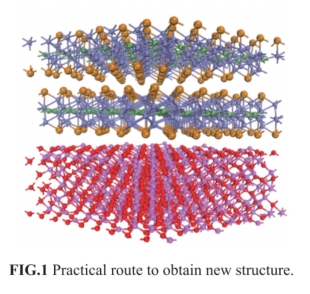Haichang Lu, John Robertson, Zhimei Sun, Weisheng Zhao
Fert Beijing Institute, MIIT Key Laboratory of Spintronics, School oflntegrated Circuit
Science and Engineering, Beihang University, Beijing, 100191, China
Engineering Department, Cambridge University, Cambridge CB2 lPZ, UK
School of Materials Science and Engineering, Beihang University, Beijing 100191, China
EXTENDED ABSTRACT: Two-dimensional (2D) materials are promising candidates for the next generation of spintronic devices as they provide flat interfaces that embed many interesting physical effects. As the size of the device shrinks to a few nanometers, the interfacial effect is not negligible for device pe戎Jrmance-related properties, such as magnetism and spin transport. In this talk, we will illustrate how we use interfacial engineering to modulate these properties. One of the requirements is that the 2D magnets constitute the device should maintain room-temperature magnetism. Due to the Mermin Wagner theorem, only a few 2D magnets are experimentally realized to possess magnetism down to the monolayer limit, among which even fewer magnets can sustain magnetism at room temperature. Therefore,interfacial engineering of the transition temperature for known magnets )( may be a better way than trying to find new magnets with high transition temperatures. We choose Fe4GeTe2, a quasi-2D ferromagnet with an intrinsic Curie temperature (TC) approaching 300K. We show that by using sapphire as the substrate, the TC of Fe4GeTe2 near the interface can rise to 530K. We also investigate CrTe2, another ferromagnetic metal with TC approaching room temperature. We reveal that though spin frustration exists in monolayer CrTe2, substrates such as graphene or h-BN help recover ferromagnetism, which explains the experiments. Last, we show that the type of interface poses a significant impact on the spin transport. We study the Tunnel Magnetoresistance (TMR) effect of h-BN/Co magnetic tunnel junction, where with physiosorbed interfaces TMR is 1000 times higher than that of chemisorbed interfaces. In all, the dramatic difference of magnetism and TMR implies that interfacial engineering is a powerful tool for future device design.

Keywords: Two-dimensional magnetic materials; first-principle calculation; magnetic heterostructure; magnetic tunnel junction

Haichang Lu completed his Ph.D. at the University of Cambridge and his Postdoctoral Studies at the Engineering Department, University of Cambridge, UK. He is an associate professor at School of Integrated Circuit Science and Engineering, Beihang University. His research interest is ab initio calculation of 2D materials and magnetic materials. He has published more than 20 papers in journals including Nature Communications and Applied Physics Review.